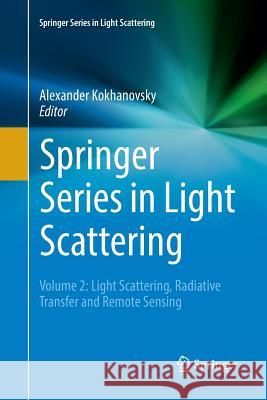Springer Series in Light Scattering: Volume 2: Light Scattering, Radiative Transfer and Remote Sensing » książka
topmenu
Springer Series in Light Scattering: Volume 2: Light Scattering, Radiative Transfer and Remote Sensing
ISBN-13: 9783319889948 / Angielski / Miękka / 2019 / 299 str.
Kategorie BISAC:
Wydawca:
Springer
Seria wydawnicza:
Język:
Angielski
ISBN-13:
9783319889948
Rok wydania:
2019
Wydanie:
Softcover Repri
Ilość stron:
299
Waga:
0.43 kg
Wymiary:
23.39 x 15.6 x 1.65
Oprawa:
Miękka
Wolumenów:
01
Dodatkowe informacje:
Wydanie ilustrowane











